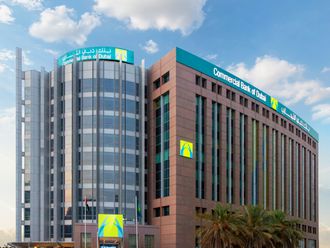In a previous article (in a three-part series) we got familiar with key principles on which your bank structures its facilities. Let us now look at the bank’s X-ray machine and what anatomy of your financials it zooms in on for an MRI.
Liquidity
As the word implies, banks check the ability to repay your obligations in a short time span, usually within one year. The borrower is expected to carry adequate current assets (that quickly convert to cash within twelve months) to repay current liabilities. Numerically, as a tenth grader knows, this is Current Assets divided by Current Liabilities. The preferred ratio is above 1.25 (Central Banks in some countries actually lay down the minimum current ratio!). It is vital to understand what this “0.25”, over one, represent. It is that portion of current assets funded by a long term source (equity, shareholder loan or a long term debt). A live example will underline its importance. The Far East volatility of 1997-98 had interesting implications in Dubai.
What happened was this. Many textile traders had large stocks but with the Thai Baht and Indonesian Rupee plunging, the next consignment of imported stocks came in much cheaper as suppliers in these countries shipped goods at rock bottom prices to clear inventories. Traders in Dubai were forced to offload their existing inventory at a discount. Now imagine a trader with a current ratio of just 1.0; meaning that the value of current assets is exactly equal to his current liabilities (a major portion being bank debt). The market has suddenly caused the value of his assets to shrink. On due date, the bank knocks on his door but he is able to liquidate his assets only at 0.80, to pay his dues which are at 1.00, causing stress and thoughts of the next flight out! On the other hand, if the assets were 1.35x, the inventory could be sold at a discount of 25 per cent to ensure repayment and maintenance of his reputation. It has been this writer’s experience that a current ratio of 1 or below for three consecutive years has caused businesses to witness significant stress leading to an expensive restructure/shut down. The quickest way to get into this quagmire is to borrow short term and use it for your long term purpose. As an entrepreneur, one can empathise with the time value of your projects (few banks are also wont to take an unduly long time for project finance) but having done the deed, ensure this is rectified within a year, to prevent unwarranted stress.
Solvency
This measures long term staying power. It simply establishes the optimum mix of debt and equity. The commonly used ratios are a) Interest cover and b) Total leverage.
Interest cover
In your P&L, add the interest to your profit after tax and divide the sum by your annual interest. The higher the better. A banker’s concern is inversely proportionate to this ratio. The red flag goes up at 1.5x. Ideally, maintain this ratio at or above 2.00. That is not just better for your bank but for your own business. How else would you reinvest and grow if your profits before interest are just about covering your interest?!
Total Leverage
This measures your total external obligations in relation to your equity in the business. The numerator has your short and long term liabilities and the denominator your net worth. Here, the banker’s concern is directly proportionate to the figure. The higher the ratio, the higher the concern. The components are much more complex. Banks focus a lot on the denominator. Net worth is essentially your assets minus your liabilities. What if the assets are dubious? What if the assets contain an intangible amount of goodwill which is not correctly ascertainable? It could include (as we discussed in the last article) an intercompany receivable that is suspect. Another interesting element is revaluation reserve. An inexperienced auditor and a gullible businessman may inflate the assets and create such a reserve on the hope that the high net worth will result in lower leverage; this is a toy parachute causing such hope to crash.
Your bank will typically remove from the denominator any asset considered intangible. The absolute ratio varies industry to industry (ship building for instance would have a very high figure and the decline continues as it reaches a normal retail set up). Else, a safe figure would oscillate between 1.5 and 2.00. A smart relationship manager would have more than one customer from your industry and should be able to advise you about the comfort ratio.
Cash flow
Profits are optical but cash flow is real. Banks frequently look at your Net Cash After Operations or NCAO — an absolute number. This is your cash profit (add non-cash charges such as depreciation and subtract non cash income such as provisions written back), further adjusted for working capital changes and interest deduction. This needs to be positive. It has been frequently witnessed that more than two consecutive years of a negative NCAO has caused severe financial distress to large and small firms alike. You find this statement as the third form (preceded by the P&L and Balance sheet) in your annual accounts prepared by your auditors. As the CEO/CFO It is worth your while to sit with the production and sales team to release as much cash as possible that may be locked up in various lines appearing in this statement.
Thus, apart from knowing your customers and suppliers, it is vital to “Know Your Banker” in order to ensure the optimum credit facilities to mutual advantage.
— Akshay Dasani is a seasoned corporate banker and may be reached on Twitter, @AkshayDasani










